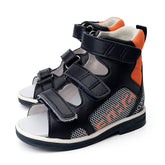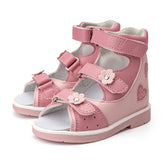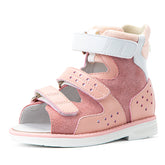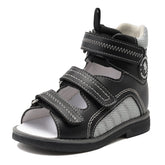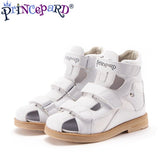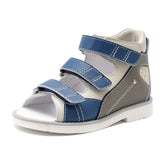Understanding Toe-Out Gait in Children: Causes, Concerns, and Guidance
Toe-out gait, also known as out-toeing, is a condition where a child walks with their feet pointing outward instead of straight ahead. While it may appear unusual, especially when compared to typical walking patterns, out-toeing is not uncommon in children and is often a part of normal development.
In this article, we’ll explore the causes of toe-out gait in children, when parents should be concerned, and how to support your child’s healthy foot development.
What Is Toe-Out Gait?
A toe-out gait occurs when the feet point away from the body’s midline while walking. It can affect one or both feet and may be more noticeable during running or fast walking.
Out-toeing is often observed in children under the age of 3 and, in many cases, improves naturally with growth. There are several possible causes:
- External tibial torsion – The shinbone is twisted outward.
- Femoral retroversion – The thigh bone rotates outward.
- Flat feet (pes planus) – Causes the feet to roll outward during walking.
- Hip muscle imbalance or tightness
According to Stanford Medicine Children's Health, toe-out gait is frequently a benign condition that doesn't require treatment unless it's severe or accompanied by pain【¹】.
When Should Parents Be Concerned?
In most children, out-toeing resolves on its own as their bones mature and their walking patterns develop. However, you may want to seek professional evaluation if:
- The out-toeing is persistent beyond age 6–7
- It only affects one side of the body
- The child trips often or has poor balance
- There is associated hip or leg pain
- Gait becomes progressively worse over time
If any of these signs are present, it's best to consult a pediatric orthopedic specialist.
📚 Recommended resource:
Lucile Packard Children’s Hospital at Stanford – Out-Toeing【¹】
Diagnosing Toe-Out Gait
Diagnosis typically involves:
- A physical exam of the legs, hips, and feet
- Observation of the child’s walking and standing posture
- In some cases, X-rays to assess bone alignment
Out-toeing caused by conditions like external tibial torsion tends to become more noticeable between ages 4–7 and may persist without intervention. A doctor will determine whether it’s likely to correct naturally or if additional monitoring is needed.
Treatment Options
For most children, no treatment is required. However, depending on severity, doctors may suggest:
- Stretching or strengthening exercises
- Physical therapy if muscle imbalance is present
- Orthopedic shoes or inserts to provide stability
- Surgical correction (very rare, only in severe cases)
According to the American Academy of Pediatrics, orthopedic intervention is rarely necessary unless symptoms persist beyond early childhood【²】.
Can Shoes Help?
While shoes don’t fix out-toeing, supportive footwear can help children feel more stable and reduce tripping risk—especially if flat feet or poor balance are involved. Look for:
- Firm heel counters for stability
- Flexible forefoot for natural movement
- Anti-slip soles to prevent falls
At PrincePard, we offer pediatric shoes designed to support growing feet, including models suitable for children with gait irregularities. Though not a medical treatment, well-designed shoes can complement a healthy walking pattern.
Final Thoughts
Toe-out gait in children is usually harmless and self-correcting. However, regular observation and early medical consultation can help rule out more serious conditions. The key is to stay informed, remain patient, and support your child’s development with comfort and care.
📌 Helpful Resources
- Stanford Children’s Health – Out-Toeing
- HealthyChildren.org – Out-Toeing
🦶 PrincePard | Specialists in Children's Foot Health
Website: www.princepard.net
Email: support@princepard.net


